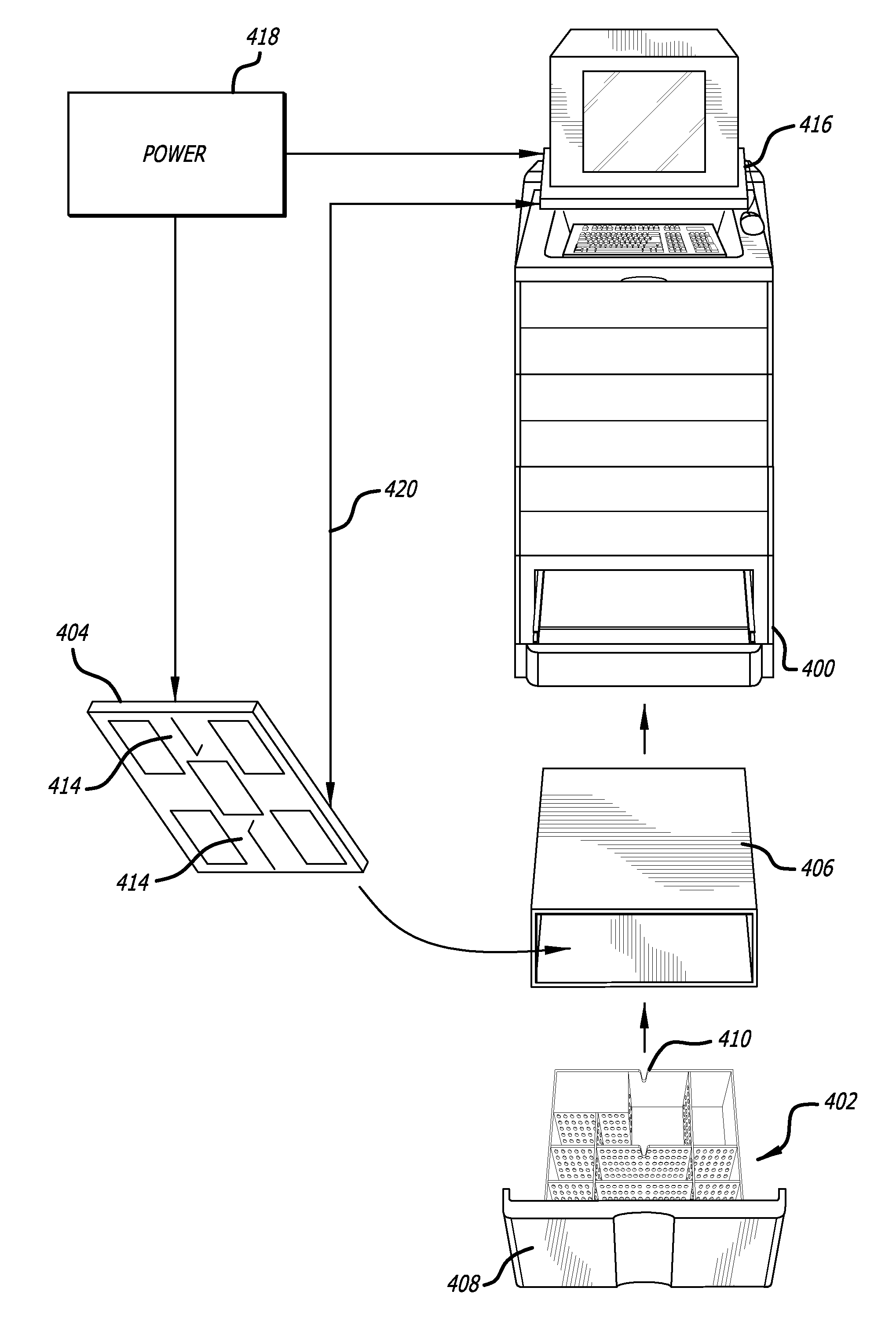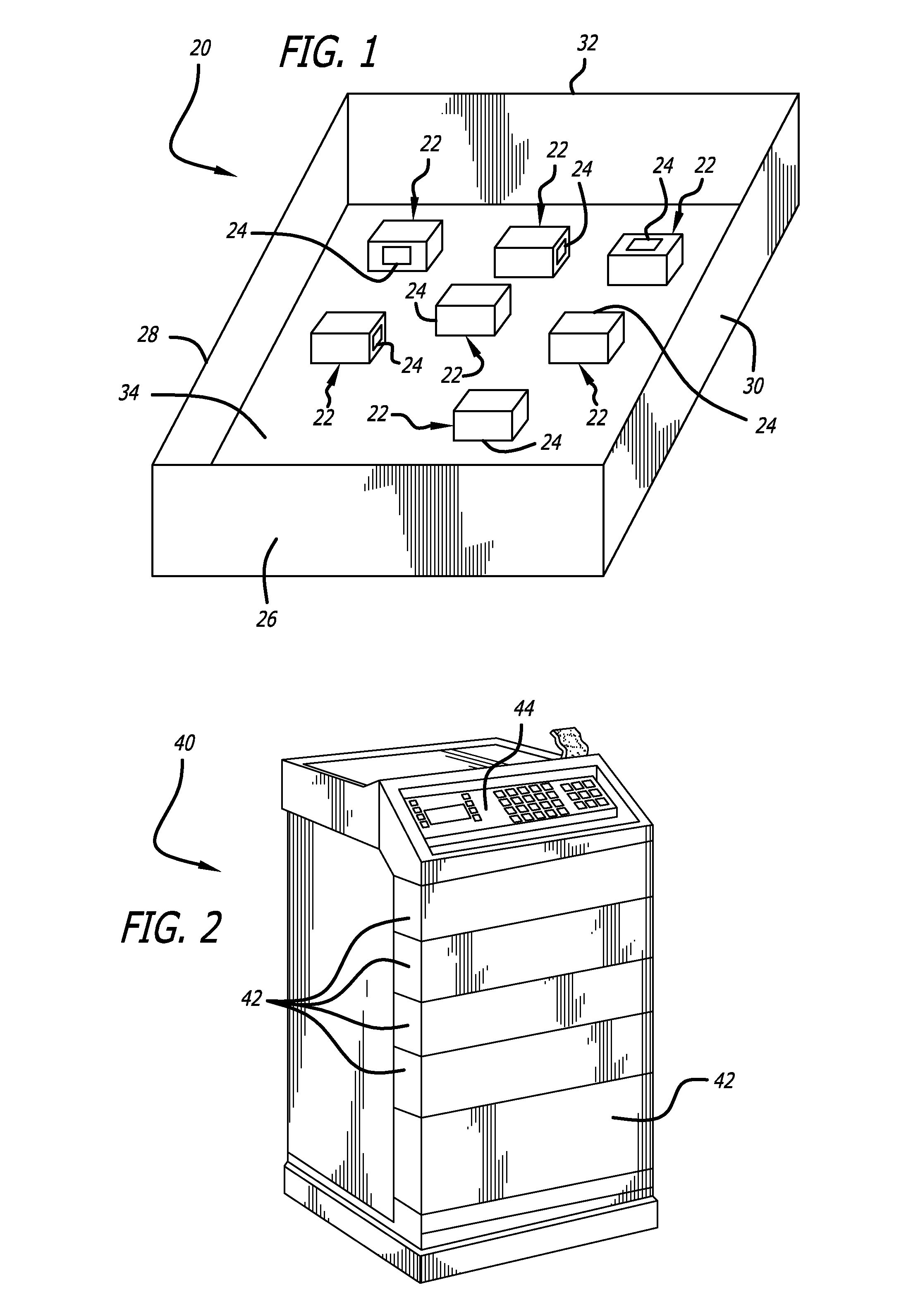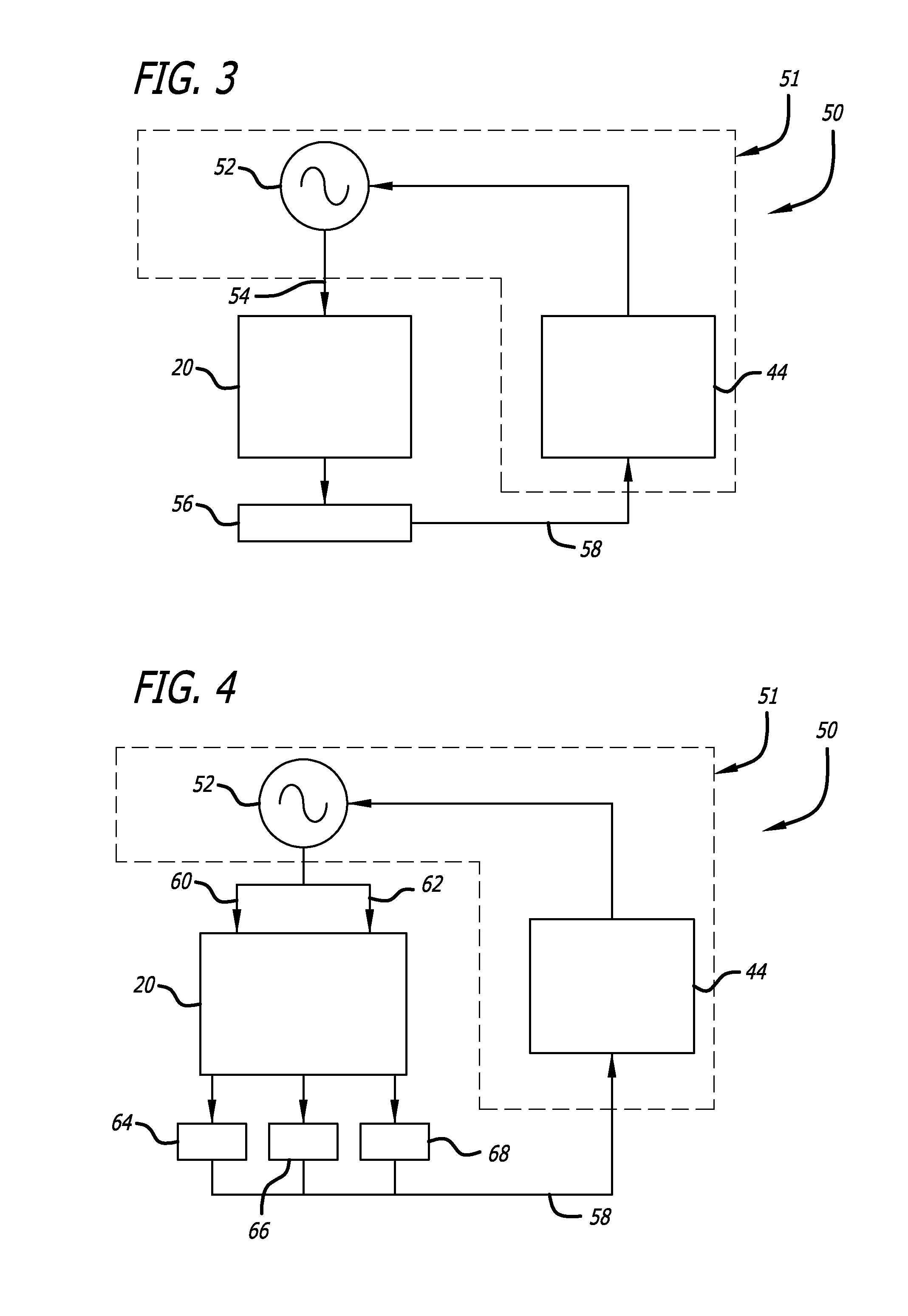Self-contained RFID-enabled drawer module
a self-contained, drawer module technology, applied in the field of medication administration, can solve the problems of high labor intensity, large amount of time, and high cost of maintaining a large amount of inventory, and achieve the effect of sufficient field strength
- Summary
- Abstract
- Description
- Claims
- Application Information
AI Technical Summary
Benefits of technology
Problems solved by technology
Method used
Image
Examples
Embodiment Construction
[0076]Referring now in more detail to the exemplary drawings for purposes of illustrating embodiments of the invention, wherein like reference numerals designate corresponding or like elements among the several views, there is shown in FIG. 1 a schematic representation of a partial enclosure 20 in which a plurality of medical articles 22 are stored, each with a respective RFID tag 24 that has a unique identification number. The partial enclosure may comprise a drawer having a front 26, a left side 28, a right side 30, a rear 32, and a bottom 34. These articles are randomly distributed in the drawer with the RFID tags facing in various and random directions.
[0077]As used in regard to the embodiments herein, “reader” and “interrogator” refer to a device that may read or write / read. The data capture device is always referred to as a reader or an interrogator regardless of whether it can only read or is also capable of writing. A reader typically contains a radio frequency module (a tra...
PUM
 Login to View More
Login to View More Abstract
Description
Claims
Application Information
 Login to View More
Login to View More - R&D
- Intellectual Property
- Life Sciences
- Materials
- Tech Scout
- Unparalleled Data Quality
- Higher Quality Content
- 60% Fewer Hallucinations
Browse by: Latest US Patents, China's latest patents, Technical Efficacy Thesaurus, Application Domain, Technology Topic, Popular Technical Reports.
© 2025 PatSnap. All rights reserved.Legal|Privacy policy|Modern Slavery Act Transparency Statement|Sitemap|About US| Contact US: help@patsnap.com



